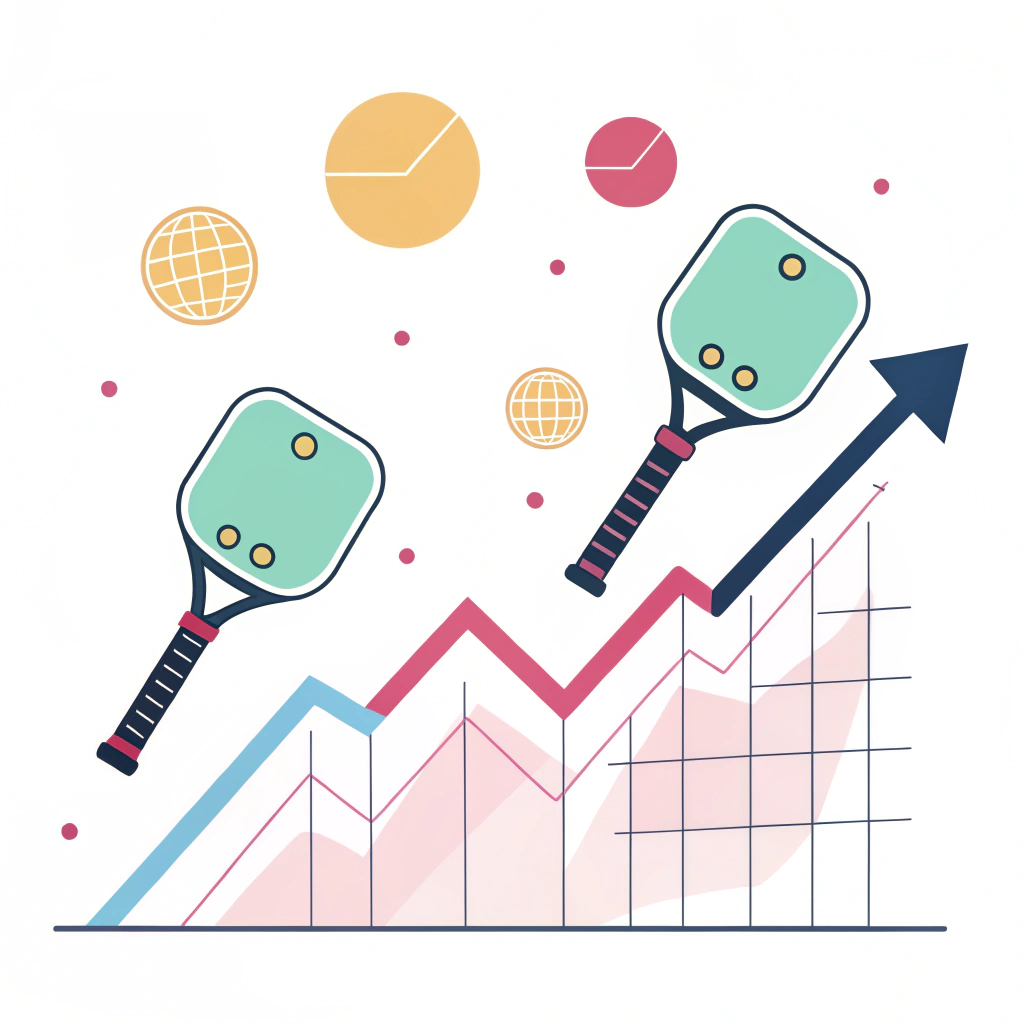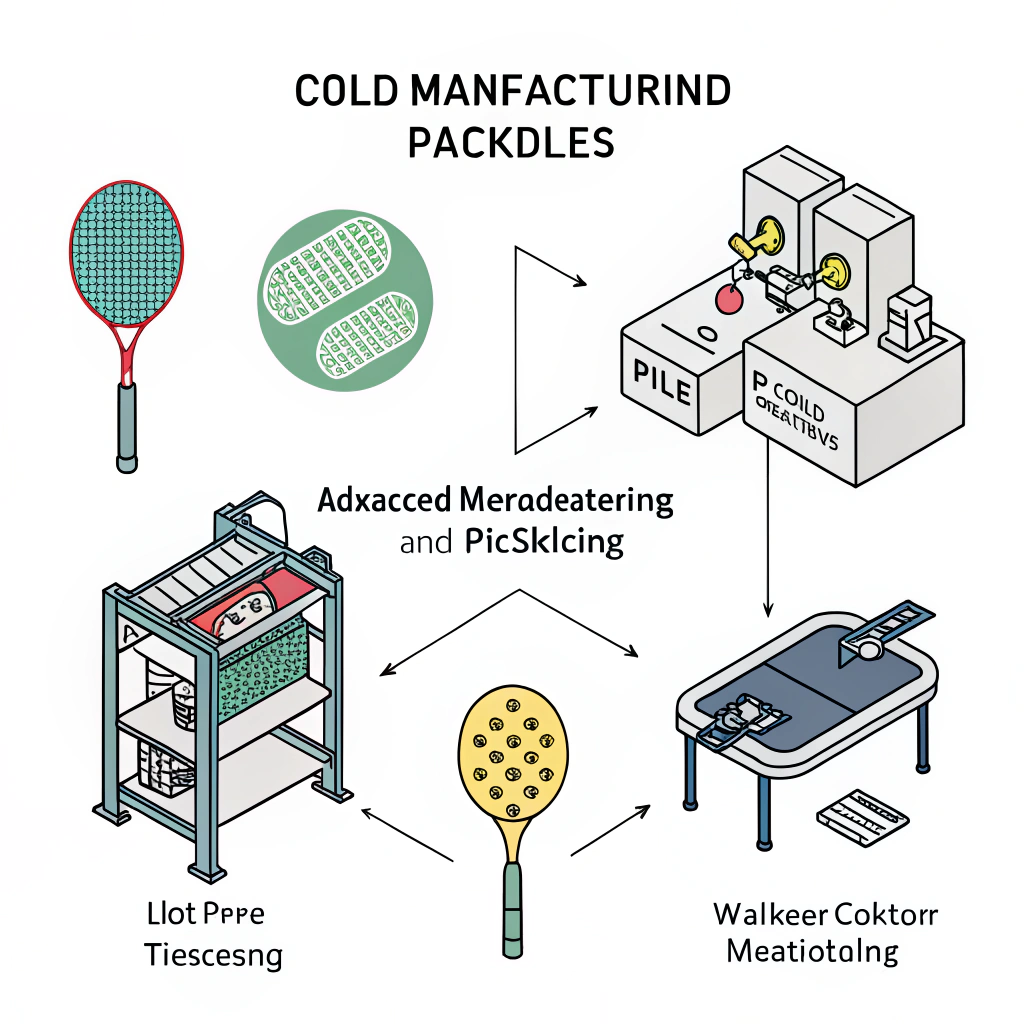The Pickleball market is booming, and businesses can tap into this emerging trend for significant ROI by understanding market dynamics, production processes, and consumer demand. In this article, we break down the factors fueling growth in the pickleball industry and outline how strategic investments in high-performance equipment manufacturing can yield substantial returns.
Recent market data indicates that the Pickleball Equipment Market reached a value of US$65.64 billion in 2022, and forecasts predict an increase to US$155.4 billion by 2033 with a CAGR1 of 9%. This rapid growth is driven by increasing popularity among recreational and competitive players worldwide, a rising number of pickleball clubs, and continuous innovation in paddle design and manufacturing.
For business strategists and procurement managers, the key takeaway is that the market is not only expanding but also evolving. The demand for advanced materials, precise production processes, and custom-designed paddles is catalyzing investments across the supply chain.
At the heart of this growth is the integration of cutting-edge manufacturing techniques such as hot pressing2, cold pressing, and thermoforming3. These processes ensure the production of high-performance paddles with superior strength, durability, and control.
Below is a comparison table summarizing the advantages and disadvantages of each production process:
| Production Process | Advantages | Disadvantages |
|---|---|---|
| Hot Pressing | High production efficiency; strong, durable paddles; excellent impact resistance | May alter material properties; high equipment investment |
| Cold Pressing | Precise control over paddle structure; maintains material properties; superior ball feel | Longer production cycles; demands high-quality equipment |
| Thermoforming | Creates intricate designs; maintains stability; suits premium products | Longer production time; higher equipment costs |
Each process offers benefits that align with specific market segments. For example, hot pressed paddles are ideal for high-performance competitive play, while cold pressed paddles cater to markets that value precision and comfort. Selecting the right process is essential for manufacturers looking to differentiate their products and capture specific segments of the pickleball market.
Manufacturers like NEX Pickleball leverage a range of premium materials to optimize paddle performance. The use of different carbon fiber types, fiberglass, and composite materials not only enhances performance but also provides scalability in product differentiation.
Each type of carbon fiber offers distinct advantages:
| Carbon Fiber Type | Key Characteristics | Ideal For |
|---|---|---|
| 3K Carbon Fiber | Excellent strength and flexibility; high rebound force; reduces vibration | Competitive play requiring high impact resistance |
| 12K Carbon Fiber | Higher thread density; smoother surface; increased hardness and durability | Extreme strength and impact resistance; precision hits |
| T300 Carbon Fiber | Outstanding tensile strength; balanced performance of strength and light weight | Applications needing both power and maneuverability |
In addition, fiberglass paddles and composite materials (e.g., combining carbon fiber with fiberglass) provide varying degrees of power, control, and durability. Pivoting production to incorporate these materials allows manufacturers to meet different performance requirements, helping businesses address targeted markets such as competitive leagues and recreational clubs.
Investing in the pickleball market is a multi-faceted decision that involves an analysis of both direct and indirect revenue streams. For instance, pickleball clubs can generate income through court fees, membership models, and event hosting, while equipment manufacturers can benefit from higher demand for premium, custom-designed paddles.
A successful strategic plan in this sector should consider the following revenue factors:
- Court Utilization Rate: At an average rate of $50 per hour, even a modest increase in utilization can lead to significant annual revenue gains.
- Additional Revenue Streams: Hosting tournaments, offering food and beverage services, and selling branded gear can substantially boost profitability.
- Market Differentiation: Providing exclusive custom paddles that incorporate advanced materials (e.g., T300 Carbon Fiber4 or Nomex Honeycomb Core5) enhances the brand value and can command premium prices.
An illustrative example: A club operating ten courts that raises utilization by just 10% could see an additional annual revenue of over $200,000.
When evaluating a potential investment, decision makers should look closely at:
- Market Penetration: How saturated is the local market with existing clubs and equipment suppliers?
- Competitive Landscape: Assessing the competitive advantage provided by high-performance materials and advanced manufacturing techniques.
- Scalability: Evaluating the ability to expand production and distribute products nationally or even globally.
- Return on Investment (ROI): Careful financial forecasting, including production cost analysis and expected market share, to ensure that the investment meets strategic financial objectives.
A detailed ROI projection should factor in manufacturing efficiencies, cost differentials between materials, and potential market growth in both competitive and recreational segments.
Additionally, industry case studies have shown that companies aligning their production processes with market demand stand a better chance of scaling quickly. For instance, agility in production—achieved through advanced technologies like thermoforming—can create a competitive advantage while supporting custom orders and limited edition releases, which further enhance margins.
NEX Pickleball’s commitment to excellence is reflected in our manufacturing processes and material expertise. By harnessing technologies such as hot pressing2, cold pressing, and thermoforming3, we ensure that each paddle offers optimal weight distribution, an ergonomic grip, and a finely tuned surface texture.
Our strategic focus on using a variety of premium materials—including multiple grades of carbon fiber, fiberglass, and composite cores—allows us to tailor products to the distinct needs of our clients. This focus on product innovation not only enhances player performance but also serves as a key differentiator in a competitive market.
For procurement managers and business strategists, the implications are clear. Partnering with or investing in manufacturers that exhibit a deep understanding of both material science and production techniques can lead to a sustainable competitive edge in the B2B sports equipment sector.
- Enhanced Product Performance: By using high-performance materials, the paddles offer superior power, control, and responsiveness.
- Customizability and Flexibility: Made-to-order options cater to niche markets, including team branding and limited edition releases.
- Quality Assurance: Strict quality control measures and rigorous testing ensure that every paddle meets the highest industry standards.
- Efficient Production: The integration of advanced production techniques ensures timely manufacturing and consistent product delivery, translating to better market responsiveness and ROI.
A strategic partnership with a manufacturer like NEX Pickleball can provide businesses with reliable, high-quality products designed for both competitive advantage and consumer satisfaction.
A robust market entry strategy requires both qualitative insights and quantitative data. Recent industry benchmarks and financial forecasts illuminate the potential profitability in the pickleball sector. Decision-makers should:
- Examine Industry Trends: Review market forecasts and industry reports to gauge long-term growth trajectories.
- Analyze Financial Projections: Use data tables and case studies to model potential ROI based on varying scenarios such as club size, utilization rates, and equipment pricing.
- Leverage Competitive Intelligence: Understand the competitive landscape and assess the unique advantages offered by advanced materials and manufacturing processes.
By integrating these data-driven strategies, companies can identify optimal entry points and tailor investment decisions to maximize returns. Moreover, aligning procurement decisions with market trends ensures that the business remains agile and competitive in an evolving landscape.
The pickleball market represents a compelling business opportunity characterized by explosive growth, evolving consumer demand, and technological innovation in manufacturing. For strategic decision-makers and procurement managers, the critical takeaway is that the intersection of premium materials, advanced production techniques, and a dynamic market creates significant potential for high ROI.
To capitalize on this opportunity, consider the following actionable steps:
- Conduct comprehensive market research to validate the growth projections and identify target segments.
- Review and select manufacturers that demonstrate a strong commitment to advanced production processes and high-quality materials.
- Evaluate potential partnerships or investments through data-driven ROI analyses that factor in market trends, production efficiencies, and competitive advantages.
- Stay agile by monitoring industry innovations and adapting procurement strategies accordingly.
By following these strategies, businesses can secure a competitive advantage, tapping into the promising potential of the global pickleball market and driving sustainable growth.
Q: Can you make money from pickleball?
A: Yes, you can profit from pickleball by tapping into multiple revenue streams such as starting a pickleball club, hosting tournaments, implementing membership models, and offering additional services like food and beverage sales alongside gear retail.
Q: How much money do pickleball clubs make?
A: Revenue for pickleball clubs is primarily determined by court utilization and the average hourly rate. With an hourly fee of around $50, even a 10% increase in utilization can result in an annual revenue increase exceeding $200,000 for a facility with ten courts.
Q: What is the pickleball industry worth?
A: The global Pickleball Equipment Market was valued at US$65.64 billion in 2022 and is projected to reach approximately US$155.4 billion by 2033, registering a CAGR of 9% over the forecast period.
-
CAGR: Click here to read more about Compound Annual Growth Rate, a key metric for measuring investment returns over time and forecasting future market growth. ^Return ↩
-
hot pressing: Click here to understand the hot pressing technique, which uses high temperature and pressure to create durable and high-performance materials in manufacturing. ^Return ↩ ↩2
-
thermoforming: Click here to learn about thermoforming, a manufacturing process that shapes plastic materials with heat, crucial for creating intricate and stable designs in premium products. ^Return ↩ ↩2
-
T300 Carbon Fiber: Click here to explore T300 Carbon Fiber, a high-performance material known for its balanced strength-to-weight ratio, often used in applications demanding both power and maneuverability. ^Return ↩
-
Nomex Honeycomb Core: Click here to delve into Nomex Honeycomb Core technology, which enhances product strength and minimizes weight, a popular choice in advanced manufacturing for its superior impact resistance. ^Return ↩







